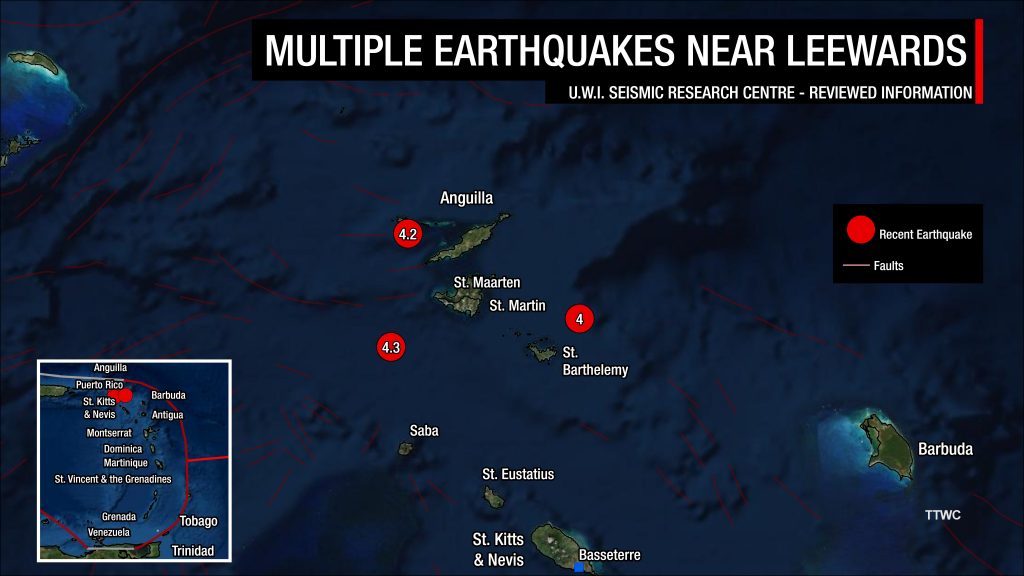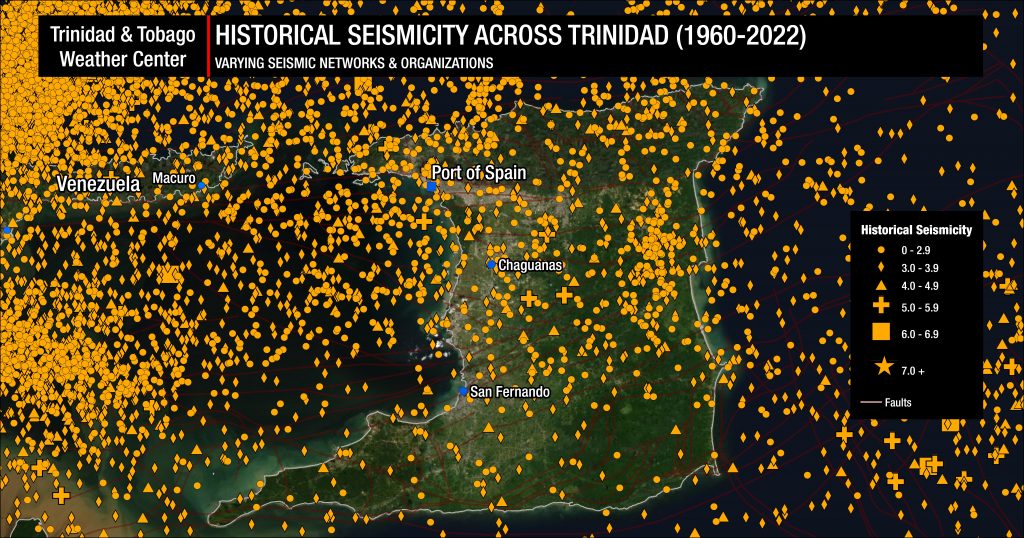Between May 7th and May 13th, the University of the West Indies Seismic Research Centre (UWI SRC) recorded three light (M4.0+) earthquakes near Anguilla, Saint Martin/Sint Maarten, and Saint Barthelemy. Quakes in this particular area are fairly common.
The first event occurred at 8:17 PM on May 7th, 2022. The quake registered at a magnitude of 4.2 (mt) on the Richter scale, approximately 18.6 kilometers west-northwest of The Valley, Anguilla. This event was located at 62.230°W and 18.240°N, at a depth of 77.3 kilometers, according to the UWI SRC. Weak shaking was reported on Sint Maarten and Anguilla.
Just over six hours later, at 1:56 PM on May 8th, 2022, another quake was recorded, this time approximately 18 kilometers northeast of Gustavia, Saint Barthelemy. The event was recorded at magnitude 4.0 (mt) and located at 62.720°W and 18.000°N, at a depth of 105.9 kilometers, according to the UWI SRC. No shaking was reported from this quake.

Several days later, at 3:07 AM on May 13th, 2022, a third light earthquake was recorded. This new event was located approximately 27.6 kilometers southwest of Philipsburg, Sint Maarten, at 63.280°W and 17.920°N. The event was recorded at magnitude 4.3 (mt) and located at a depth of 115 kilometers, according to the UWI SRC. This event was reported felt across both the Dutch Sint Maarten and French Saint Martin with weak shaking.
There was no tsunami threat.
There are four conditions necessary for an earthquake to cause a tsunami:
- The earthquake must occur beneath the ocean or cause material to slide within or into the ocean.
- The earthquake must be strong, at least magnitude 6.5.
- The earthquake must rupture the Earth’s surface and it must occur at a shallow depth – less than 70 kilometers below the surface of the Earth.
- The earthquake must cause vertical movement of the seafloor (up to several meters).
None of these conditions occurred.
Note that different seismic monitoring agencies use different methods, or several methods, for processing quake parameters across the globe. Each method has its limitations and will likely produce different results within the range of the data’s uncertainty. This is generally accepted within the scientific community.
Read More
Earthquake Magnitude & Intensity
Can earthquakes be predicted or forecasted?
Has there been an increase in seismic activity?

Trinidad and Tobago and the surrounding region are very seismically active. Across the Eastern Caribbean, over 2,200 earthquakes are recorded annually.
On average, the Eastern Caribbean has seen a pattern of major (M7.0-M7.9) quakes every 20 to 30 years. That pattern has stayed true. The last major (M7.0-7.9) quake occurred north of Martinique in 2007.
Historical patterns indicate that great quakes (M8.0+) on the Richter Scale have occurred every century in the region. The probability of another event at that level is high since the last >M8.0 earthquake occurred in 1843. While it is impossible to say definitively when the next great quake would occur in the region, the time since the last one is now more than 170 years ago.
It is important to note seismic activity *cannot* be predicted – meaning the precise time, date, magnitude, depth, etc., cannot be known ahead of time based on current research and technology.
Now is the time to create or go over your earthquake preparedness plan and know what to do during, before, and after an earthquake.












